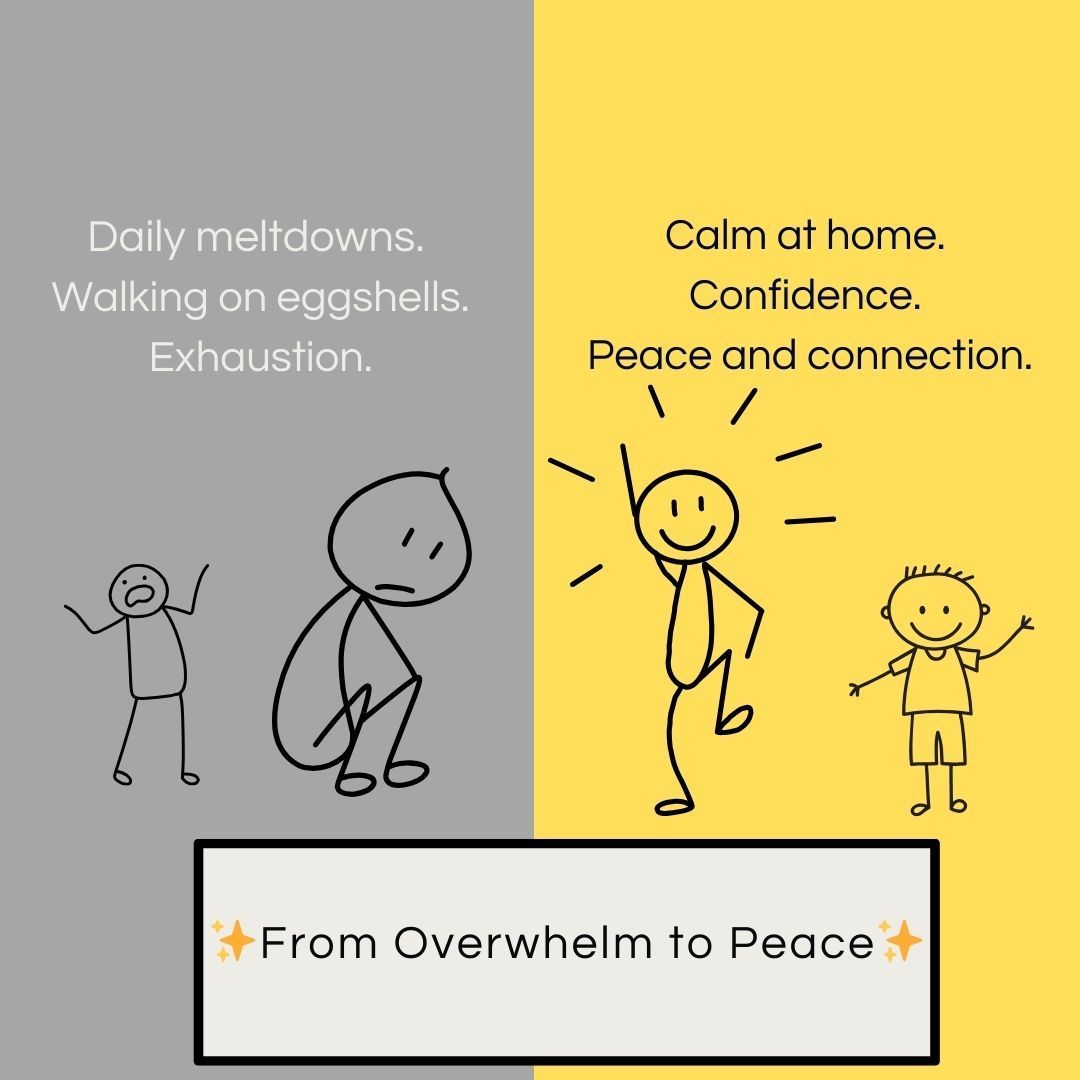Hidden Sensory Challenges That Can Look Like Bad Behavior
Ceara Deno, MD • June 3, 2025
Schedule A Free Call
Hidden Sensory Challenges That Can Look Like Bad Behavior

How much do you know about your child’s sensory needs?
I’ll be honest.
I had never given it much thought about sensory needs until I started raising a highly sensitive child myself.
Here’s an example:
My younger son has never been able to tolerate clipping his nails.
He would run away, or throw a fit. It was never
easy.
I used to think he was being difficult on purpose.
I would think:
Why does he have to make this so difficult??
Doesn't he realize that by cooperating this would go so much easier??
We would already be done by now if he just let me clip his stupid nails!
It would drive me crazy!
And he’s not the only one.
Many, many kids struggle with sensory challenges that cause them to look like they are being intentionally difficult.
It turns out, for highly sensitive kids, sensory struggles like this are extremely common.
Many of these sensory struggles are hiding in plain sight--and parents are not aware.
Sensory challenges can look like oppositionality. Or defiance. Or a kid with bad behavior.
Today I want to share just a few of the sensory challenges that might look like oppositional or difficult behavior.
#1.) The Kid Who Won’t Eat:
Many kids with sensory sensitivities find textures, temperatures and smells of food overwhelming. This can cause feelings of disgust which looks like defiance and picky eating.
#2.) The Kid Who Won’t Get Dressed:
Kids with high tactile sensitivities can object to the feelings of tight clothing, itchy clothing, restrictive clothing, tags, seams, etc. These sensitivities can make them look difficult and defiant when getting dressed.
#3.) The Kid Who Won’t Do Basic Hygiene
(Brushing Teeth, Clipping Nails, Brushing Hair, Washing Hair, Getting Hair Cut, Etc):
So many sensory issues are hidden obstacles to many kids easily performing these activities of daily living. Some of these are tactile sensitivities, and some of these are vestibular sensitivities to the sensation of having the head being tilted in different directions (for example, for hair washing).
#4.) The Kid Who Fears Loud Noises
(Toilet Flushing, Hand Dryers, Vaccuums, Etc):
Auditory sensitivities to loud noises can create lots of fear for sensitive kids. They’re not trying to be difficult. Loud noises can actually feel painful.
#5.) The Kid Who Won’t Sit Still:
Some kids require constant movement in order to get the sensory input as to where their body is in space. Without moving, they don’t get the sensory input they need for their body to feel safe. So what looks like hyperactivity or defiance, is simply an attempt to get a sensory need met.
#6.) The Kid Who Bumps Into Things/People:
Some kids who crash into things and people are seeking deep sensory pressure input for their nervous system to feel safe in the world. What might look like being clumsy or difficult, is simply an attempt to meet a sensory need.
#7.) Kid Who Has Big Melt Downs After Fun Events:
Kids who have big meltdowns after birthday parties, school, or fun outings, are often reacting to sensory exhaustion. Their nervous systems are so overstimulated from the barrage of sensory inputs, they crash emotionally.
*******
What often looks like “BAD” behavior is a kid doing their best in a world that feels like too much.
How Can Parents Help?
If you’re seeing these behaviors in your child, know this: they’re not being difficult on purpose.
Sensory challenges are real, and your child’s reactions are signals—not misbehavior.
The best response isn’t punishment—it’s support.
That might look like offering accommodations (like tag-free clothing, noise-canceling headphones, or quiet recovery time after outings), approaching your child with more empathy and understanding, or maybe working with an occupational therapist.
Often even small adjustments to meet our child’s sensory needs, can help children feel safer—and their behavior starts to reflect that safety.
You don’t have to change everything overnight.
Even one small shift at a time can make a big difference.
If you want support handling sensory sensitivities in your child, let’s talk, I’d love to help. You don’t have to do this alone.

Have you ever noticed how something as simple as leaving the playground, turning off a tablet, or getting ready for school can spark big resistance—or even a meltdown? For many children, especially those who are highly sensitive or deeply feeling, transitions are some of the hardest moments of the day. It’s not because they’re being “difficult”—it’s because their brains and nervous systems experience change differently. The good news: once you understand why transitions are so challenging, you can respond with empathy and tools that make them easier. Here are 5 common reasons transitions are tough for your child—and what you can do to help. 1. They’re Deeply Engaged in the Moment Highly sensitive kids often immerse themselves fully in what they’re doing—whether that’s reading, building, or playing. Being asked to stop feels like being pulled out of a world they love. How to help: Give gentle warnings before the change. Try: “Five more minutes of play, then it’s time for dinner.” Using a timer or visual countdown can help them prepare. 2. Their Brains Need More Time to Shift Gears Transitions require mental flexibility, which can be harder for sensitive nervous systems. Switching from one activity to another i s like changing lanes on a crowded highway—it takes time. How to help: Use consistent signals to cue transitions, such as a special song, a picture schedule, or a fun countdown routine. 3. Transitions Can Feel Like a Loss of Control Children often feel like transitions are imposed on them. That lack of control can trigger pushback or power struggles. How to help: Offer simple choices so they feel empowered. For example: “Do you want to brush teeth first or change into pajamas first?” 4. They Anticipate Stress in the Next Activity If your child expects the next step to be boring, stressful, or less enjoyable, they may resist leaving the current activity. How to help: Empathize first: “It’s hard to stop playing, I know.” Then, ease the shift with something to look forward to: “Want to bring your toy to the car so it feels easier?” 5. Their Nervous Systems Feel Every Shift More Intensely Highly sensitive kids notice and react to even small changes in environment, energy, and routine. What feels like a tiny shift to you may feel overwhelming to them. How to help: Keep routines predictable when possible. Create comforting rituals—like a goodbye hug, a special handshake, or a silly phrase—that help anchor them during transitions. The Takeaway Transitions are about more than just moving from one activity to another—they involve emotions, expectations, and a sensitive nervous system. With empathy and small adjustments, you can turn transition battles into moments of connection. 💛 Parenting a highly sensitive child isn’t easy—but it’s also filled with opportunities to build trust, closeness, and resilience. If you’d like more guidance on making daily challenges like transitions smoother, I’d love to support you. I offer one-on-one parent coaching tailored to families raising deeply feeling kids. Schedule a free call with me here.










